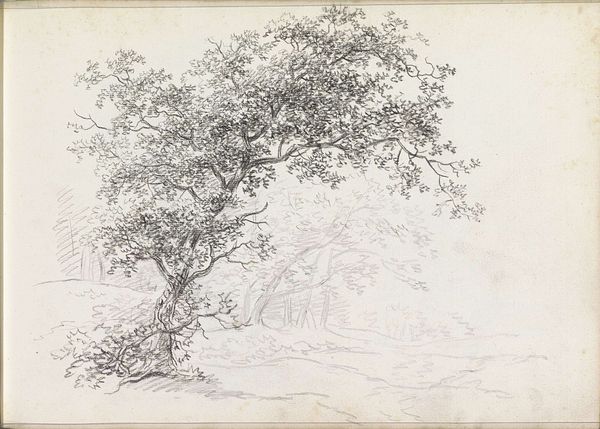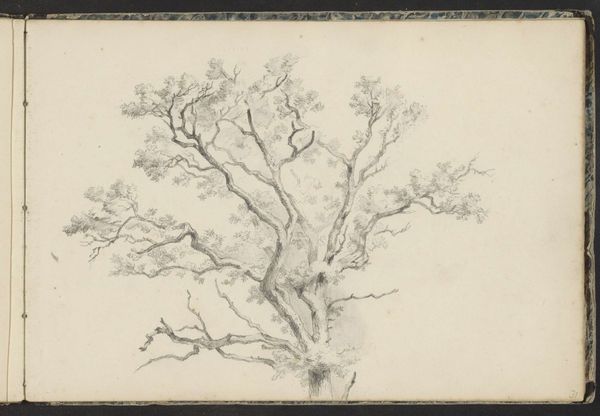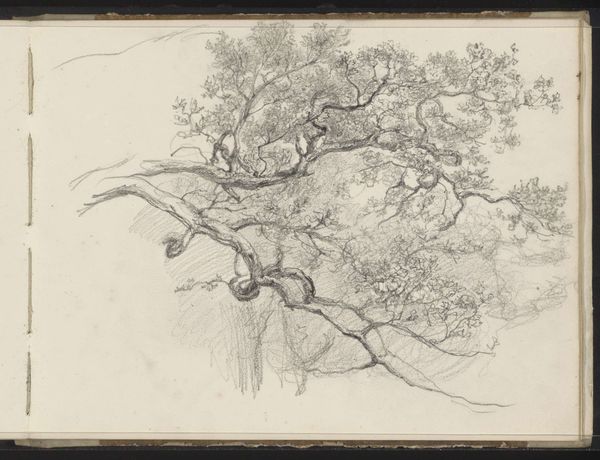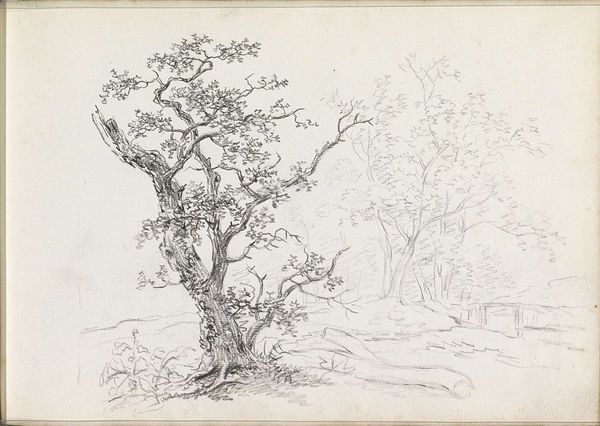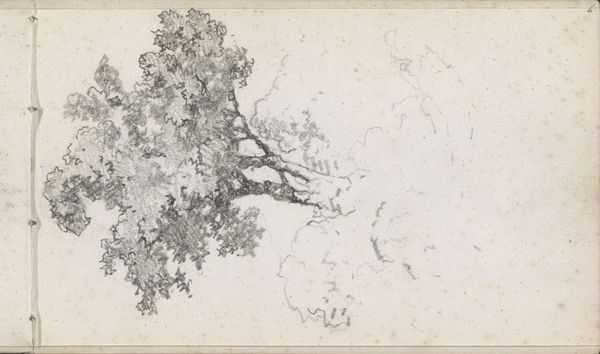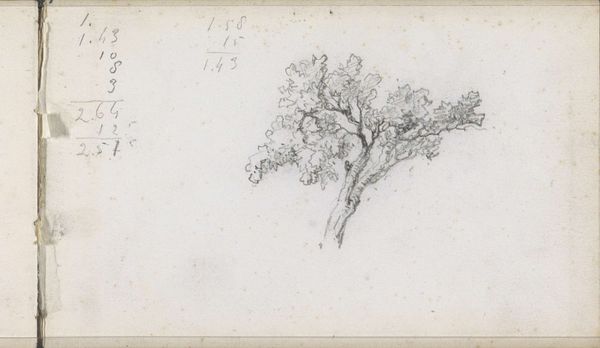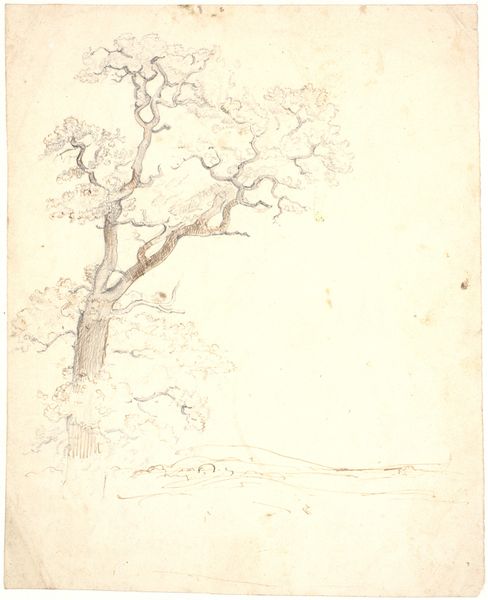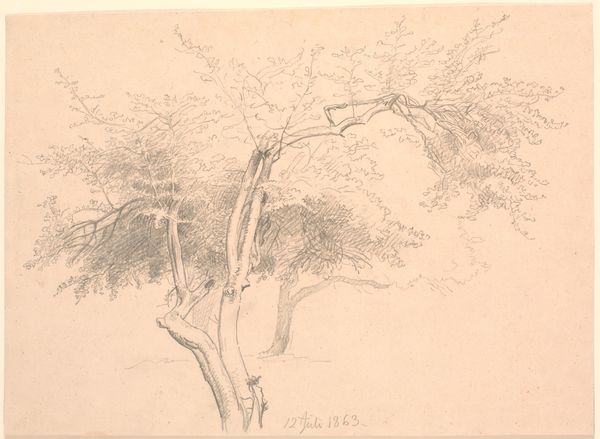
drawing, pencil
#
tree
#
drawing
#
pencil sketch
#
landscape
#
figuration
#
form
#
romanticism
#
pencil
#
line
Copyright: Rijks Museum: Open Domain
Curator: Andreas Schelfhout's pencil drawing, "Bomen," created around 1811, presents a stand of trees with remarkable delicacy, and can be found here at the Rijksmuseum. What are your first impressions of this piece? Editor: It has a starkness, doesn't it? Despite being "just" a sketch, it's incredibly evocative. The lines have a nervous energy; it feels as though the trees are caught in a perpetual shiver. It calls attention to a very simple motif in art history, a tree. But does this artist say anything important? Curator: Well, think about the Romanticism movement Schelfhout operated within. Artists grappled with humanity's place in the natural world, our alienation from it, or attempts at communion. This work highlights nature itself. These drawings circulated, building an audience and demonstrating a certain artistic approach within the Dutch art world of the time. He later built an art studio too, where this type of work assisted the teaching to his pupils. Editor: It's intriguing that the tree trunks remain in shadow while light dances on the leaves. It really highlights their forms! It prompts questions around humanity’s impact, in turn reflecting ideas about who has access to these landscapes and what purposes the landscapes have served. The tree appears almost as a resilient figure surviving some form of environment challenge in some contexts. Curator: Precisely. And his choice of pencil lends itself to capturing that texture – the rough bark against the smooth, shimmering foliage. Editor: It really allows the focus to settle on the intricacies of each branch, on the overall form, emphasizing its almost wiry vulnerability. So, yes it offers a nuanced representation, drawing on societal structures surrounding nature. Curator: Absolutely, and when viewing such intimate studies, we are able to get closer to a mindset prevalent at this historical moment. They were using art as a way to better comprehend, or at least represent in aesthetic form, some wider social issue. Editor: Seeing a seemingly simple drawing really open to to a bigger interpretation offers a perspective on Dutch society through our interpretation, a window into the period through both Schelfhout's skill and contemporary artistic practice.
Comments
No comments
Be the first to comment and join the conversation on the ultimate creative platform.

